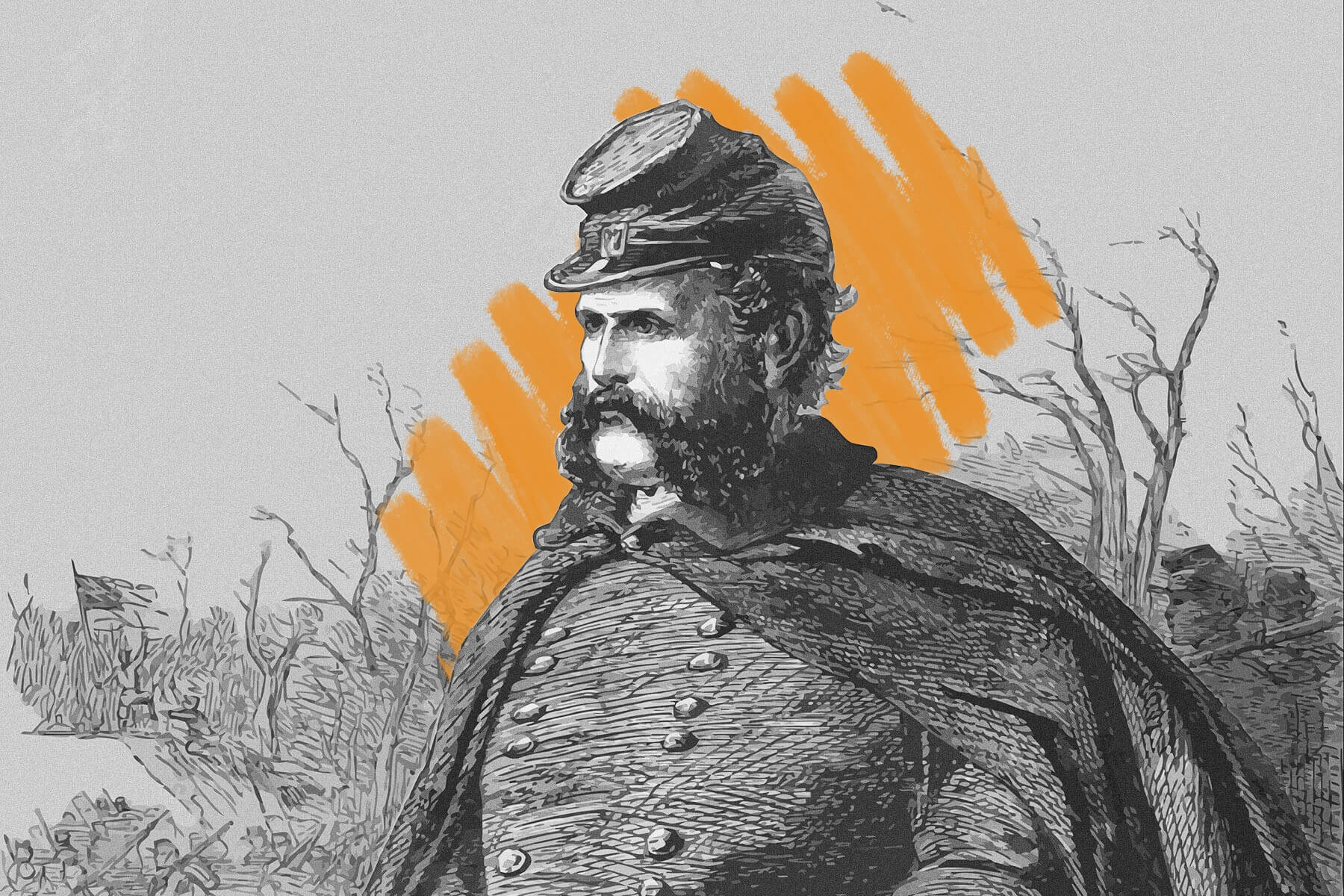Sideburns are named after a Union general in the Civil War.
While we may never know the first person to wear sideburns, we do know the origin of the word. The popular facial hair style gets its name from a single individual: Major General Ambrose Burnside (1824-1881), a Union general in the Civil War who later became governor of Rhode Island.
By all accounts, including his own, Burnside was a terrible general. He was appointed to a post as Commander of the Army of the Potomac in spite of his own protests, and his time in the role proved disastrous. He led the Union Army to a devastating defeat in the Battle of Fredericksburg in 1862, as well as a second failed Fredericksburg offensive campaign known unflatteringly as the “Mud March.” Shortly thereafter, he was relieved of command. But while his military career didn’t exactly make history, Burnside managed to earn lasting fame for his facial hair — a distinct variation on muttonchop whiskers. As early as 1866, newspapers began referring to the general’s signature facial hair as “Burnside whiskers,” and the term evolved over time into just “sideburns.”
While the name now refers to any simple strip of hair grown down the side of the face, the original sideburns sported by General Burnside were a bit more elaborate: The look consisted of thick, bushy whiskers that joined in a luxurious mustache above a clean-shaven chin. That style eventually fell out of fashion (though perhaps some brave tastemaker will bring it back), but Burnside’s legacy lives on in the form of the more modest, trimmed sideburns that are still seen today.







